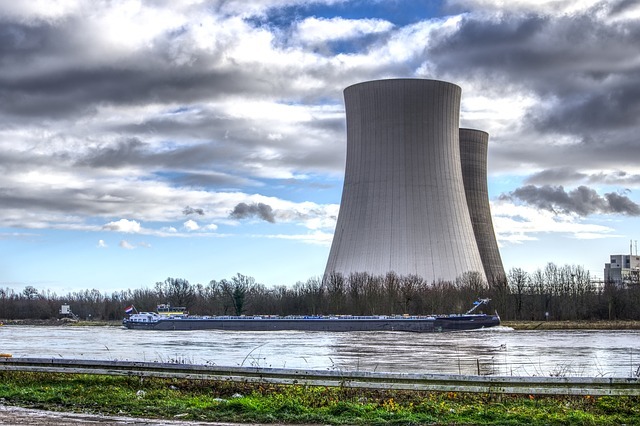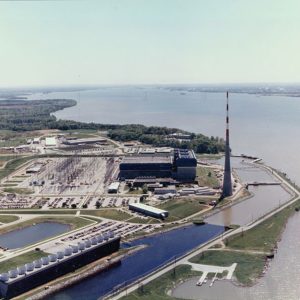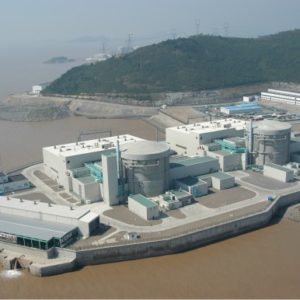Nuclear energy is one of the important contributors to electricity production in many countries. With more than 3 countries currently operating nuclear power plants, a significant number of them are located in Europe, Northern America, East Asia and South Asia.

Image: The US is the top consumer of nuclear energy in the world. Photo courtesy of distel2610/Pixabay.
Using a nuclear fission reaction, nuclear power plants produce high amounts of electricity with uranium as fuel. Nuclear power plants are considered as environmentally friendly, as electricity generated by them emits low greenhouse gas emissions. According to BP Statistical Review of World Energy 2018 report, the total consumption of nuclear energy in the world stood at 596.4 million tonnes oil equivalent (6,936TWh) in 2017.
Here is the list of top five nuclear energy consuming countries:
US: Consuming 191.7 million tonnes oil equivalent (2,229.471Twh) of nuclear energy in 2017, the US occupies first spot in the list. The North American nation is also the biggest producer of nuclear power in the world. Nuclear power plants generate nearly 20% of the country’s total electricity generation. According to the World Nuclear Association, the country’s nuclear reactors generated 805 billion kWh of electricity in 2017. Palo Verde Generating Station, Browns Ferry Nuclear Plant, South Texas Nuclear Generating Station, Oconee Nuclear Station and Braidwood Generating Station are the major nuclear power plants in the US.

With a production capacity of 3.9GW, the Palo Verde Generating Station supplies power in the states of Arizona, California, New Mexico and Texas. The 3.4GW Browns Ferry Nuclear Plant features three General Electric boiling water reactor (BWR) nuclear generating units. Opened in 1974, the facility is owned entirely by the Tennessee Valley Authority (TVA).
France: Also the second largest producer of nuclear power in the world, France consumed 90.1 million tonnes oil equivalent (1,047.8TWh) of nuclear energy in 2017. With 58 nuclear reactors in operation, the country generates a significant part of electricity from nuclear power plants. Gravelines Nuclear Power Plant and Paluel Nuclear Power Plant are the major nuclear power plants in France. The Gravelines Nuclear Power Plant has an installed net capacity of 5,460MW, while the Paluel Nuclear Power Plant has a gross installed capacity of 5,528MW. Both the plants are operated by French utility Electricite De France (EDF). The Gravelines Nuclear Power Plant features six 900MW capacity PWR units.
China:
China is the third biggest consumer of nuclear energy in the world. It consumed 56.2 million tonnes oil equivalent (653.6TWh) of nuclear energy in 2017. Increasing pollution from coal-fired power plants is one of key factors driving nuclear power expansion in the country. As of October 2017, the country had 37 nuclear power reactors in operation. By adding new reactors, China aims to increase its nuclear capacity by 70% to 58 GWe by 2020-21.

Russia:
Russia consumed 46 million tonnes oil equivalent (534.9TWh) of nuclear energy in 2017. It is the fourth biggest consumer of nuclear energy in the world, according to the BP report. It is also occupies fourth spot in the list of top producers of nuclear power. In 2006, the Federal Atomic Energy Agency (Rosatom) announced targets to increase nuclear power contribution to Russia’s energy mix to 23% by 2020 and 25% by 2030. The government had also announced plans to build 11 new nuclear power reactors by 2030, according to a World Nuclear News report.
South Korea:
With a nuclear energy consumption of 33.6 million tonnes oil equivalent (390.7TWh), South Korea stands at fifth place in the list. The East Asian country produces more than 30% of the electricity from nuclear power plants. In April 2015, South Korea had signed a nuclear cooperation agreement with the US government to ensure a stable supply of fuel for its nuclear reactors. Kori Nuclear Power Plant, Hanul Nuclear Power Plant, and Hanbit Nuclear Power Plant are the major nuclear power plants in South Korea.
